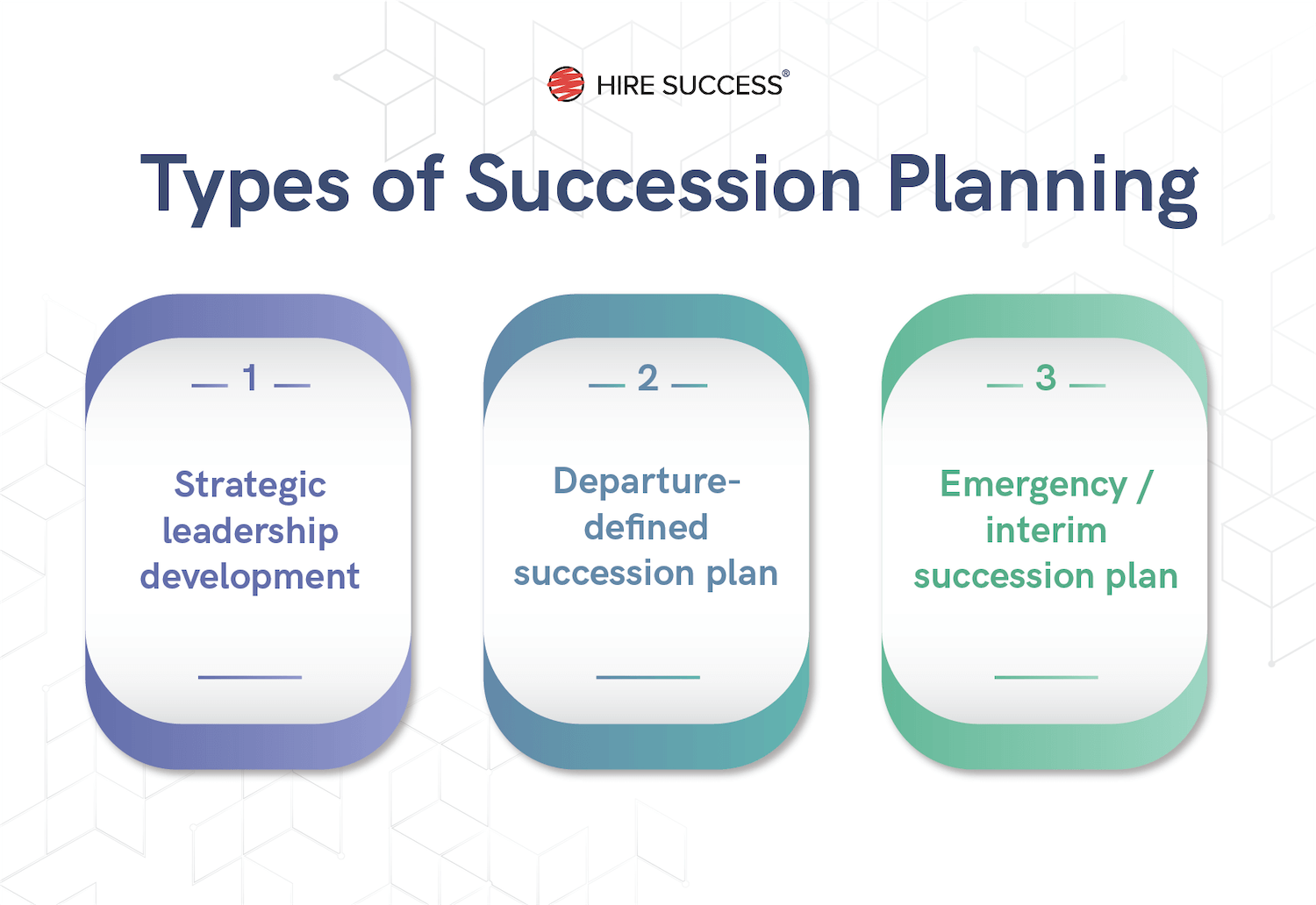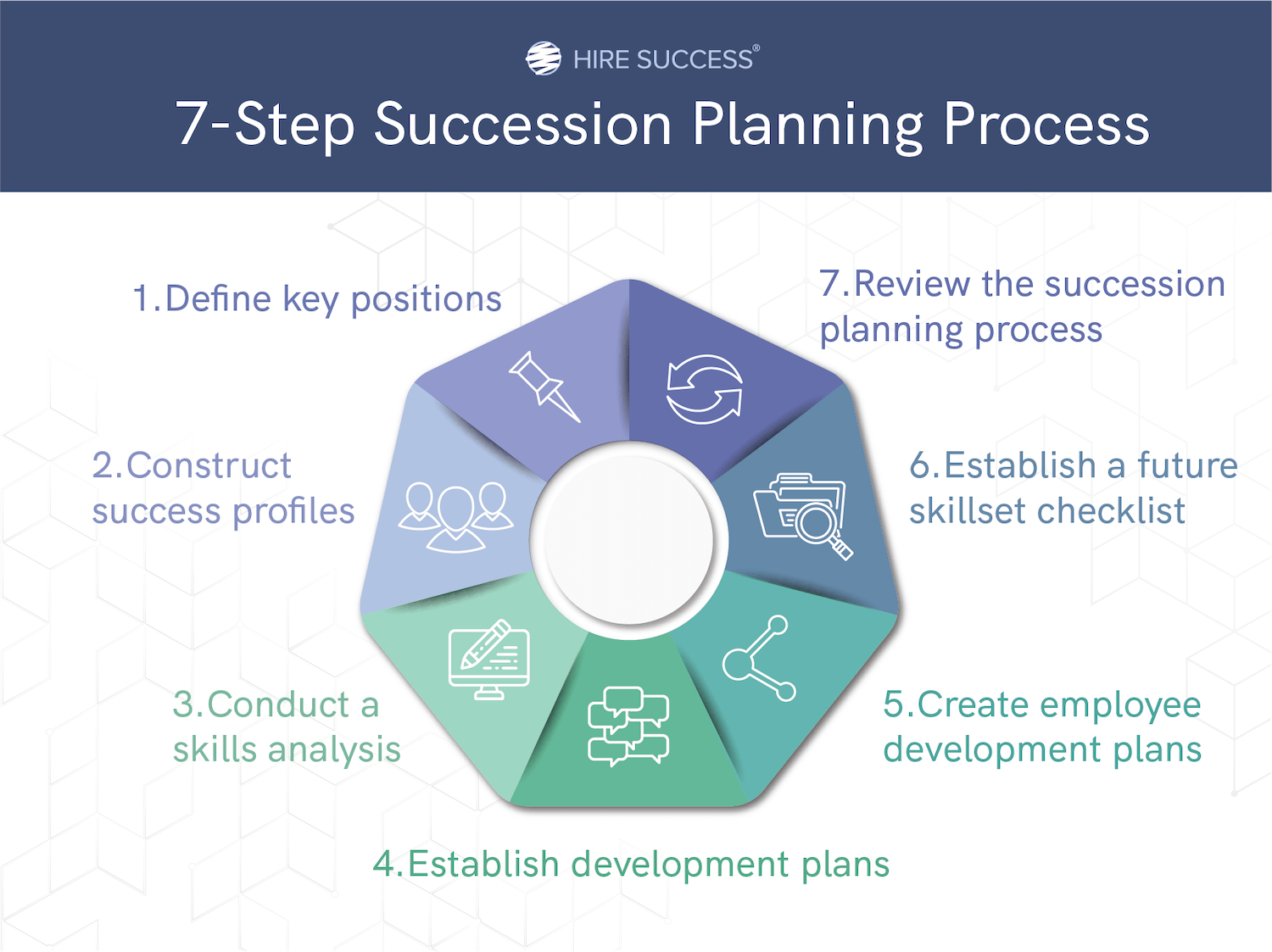Succession planning is a contingency plan for the future of your company. When a key employee leaves without sufficient notice, the company could be left in the lurch. Even long-term employees may leave their jobs at any time. The pandemic, for example, caught a lot of businesses by surprise.
Small businesses are particularly vulnerable to the loss of high-performing employees with many responsibilities. To protect your company and ensure that business can go on after the loss of a key employee, you need a succession plan to fit each job description.
Ask yourself this: If a key employee suddenly resigned or retired unexpectedly, would you know what to look for in a replacement? Do you have a list of the skills, traits, and abilities necessary for that role? Could anyone in your company step into the role?
What is succession planning?
The heart of succession planning is a comprehensive job description and a list of the skills, talents, and personality traits necessary to fill the role. With a succession plan ready, you can start filling critical roles as soon as an employee quits or long before you have advance warning.
What are the different types of succession planning?

- Strategic leader development. The best person to fill a vacancy may already be in your organization. Promoting from within is efficient and great for morale. Effective leadership development means knowing the skills and capabilities of everyone on your staff to identify top performers and empower those with leadership potential.
- Departure defined succession planning. C-Suite professionals often give plenty of notice when they plan to leave. When this happens, the organization has ample time to find a valuable replacement.
- Emergency or interim succession plan. Occasionally an important leader will leave immediately. This may be due to health concerns, an accident, or a life-changing event. After a sudden loss, the organization will often choose an interim replacement to fill the job while searching for a suitable replacement.
When and why to implement succession planning
Because you never know what might happen, every company needs a customized succession planning definition. Consider it part of your overall strategy for growth and success rather than an event at the time of sale or new leadership.
Your organization will be stronger if you can identify and take advantage of the skills your employees have now while also looking for skills missing while hiring new talent.
You can also combine your succession planning strategy with mentoring programs to ensure that employees — especially those being targeted for future leadership roles — get the guidance they need and that people with valuable talents don’t slip through your fingers.
The benefits of succession planning
Succession planning sets your company up for smooth transitions when key employees leave. There are other benefits as well. Here are a few additional ways the succession planning process benefits your company.
- Promotes training and development. One step in your succession planning is getting to know your employees, and learning their skills, talents, and capabilities. Once you find your hidden stars, you can train and develop their skills for promotion.
- Refines your internal process. Taking a deep dive into your job descriptions and employee skill sets can help you develop an effective hiring process for every circumstance.
- Identifies skill gaps within the company. Your investigation may reveal your teams’ shortcomings. Are you missing a specific skill that would enhance productivity? Is your team struggling in any area?
- Maintains brand identity. When you replace a major player in a hurry, your brand identity could suffer. A new CEO could have an entirely different vision at odds with your brand. To maintain it, you need chief executives with an understanding and respect for your brand.
Steps to implement in your succession planning process

Since the future of your business is at stake, approach succession planning carefully, methodically, and well-informed. Succession plans can have different methodologies, but the end goal is always the same: to ensure a smooth and orderly transition when higher-ups depart. With succession planning best practices defined and in place, you’ll know what to do next regardless of the circumstances.
1. Define key work positions and their roles to assess what makes them critical for the company
Not every job is hard to fill. Every organization has easily replaceable people with basic work skills. However, some positions are critical to the success of your business. Important jobs drive revenue and your company’s growth hinges on their productivity. Roles like account managers and decision makers are more difficult to fill. You need people with integrity and customer-facing personality skills who will represent your brand in a positive light.
Company leaders, including supervisors, managers, and team leaders at every level can also affect your bottom line. Efficient managers influence performance and drive productivity while bad managers are more likely to do the opposite.
That’s why data-driven hiring decisions are important to your company’s health and growth trajectory.
2. Construct success profiles for each role and identify top candidates for succession
Success profiles detail the skills, abilities, and personality types needed to be successful in a job. Using your most productive employees as examples (employee benchmarking) helps you create a job baseline of skills and personality traits to identify candidates most likely to succeed in each job.
You probably already have a sense of who some of your top performers are. But with personality and skills testing, you could find some people who have the right leadership traits or to become highly successful in a particular role, but are currently under the radar. With the right career development opportunities, they’re more likely to stay with your company and help it succeed.
3. Conduct a competency gap analysis to pinpoint which skills need to be developed for the future
It’s not unusual for a company to be oblivious to weaknesses. Conducting a skills gap analysis will reveal weak areas and highlight strengths, so you can tailor training accordingly.
Having a better understanding of your workforce will show you where people need more training or mentoring. Ongoing employee testing will also help you understand whether your training or mentoring programs are effective.
As you’re developing training and mentoring programs, think ahead for future needs and consider which employees might be appropriate to step up if someone above them steps down. Train not only for the job the employee holds today, but for the role they might fill in the future.
Move beyond resumes, identify true potential
Make smarter hiring decisions using objective data on candidates' strengths, work styles, and personality traits.
Book a Demo Try It Free4. Establish succession development plans for critical work positions to future-proof your business needs
What happens if your highest producer suddenly leaves the company without notice? Life-changing events happen all the time, meaning you may need to fill that position with little or no notice. If you make a mistake, your company could lose revenue, damage its reputation, or introduce toxicity into your carefully nurtured culture.
With a succession plan in place, you’re prepared no matter what happens. You’ve already identified others who can step right into the role and have a success profile for a vacated position. Being ready for anything gives your business continuity. Instead of scrambling to fill a critical role with anyone readily available or overwhelming other employees with important tasks they may not be qualified to handle, you can implement your plan with confidence for a smooth, seamless transition.
5. Create development plans for individual employees to grow their skills
Once you’ve identified employees for a range of roles, you’ll want to create onboarding, mentoring, and training programs to help them develop the skills they need to stay and grow.
By identifying the key traits and skills for each position, you can put together career plans and mentoring programs to help ensure people are trained for the future. Having clear career plans in place to help employees set, monitor, and reach goals has many benefits. Helping your employees achieve career goals and promoting from within creates a strong company culture. It also makes for a happier workforce, inspires higher productivity, and reduces employee turnover.
6. Establish and maintain workforce skills inventory to use in your future hiring or job promotions
Finally, by testing your current workforce, you’ll probably find some people who have “hidden” traits and skills that you’re not using to their full advantage. Don’t let those skills and traits go to waste. Look for ways to use employees’ natural talents.
By including testing as part of your business strategy, you’ll not only improve your hiring and development processes, but help employees succeed and better prepare for the future of your company.
At the same time, you’ll create a skills inventory for your company. If you have a departure, you may be able to search your database for the skills and personality traits you need. You can find the perfect replacement under your own roof.
7. Review and adapt the succession planning process to any changes within the organization
As your business grows, your needs will change. Your succession plans need to be reviewed periodically to ensure each job success profile continues to align with the goals and strategies of the company. An outdated plan is no plan.
Hire Success® tools for employee succession planning
Successful succession planning strategy depends on knowledge. To hire and promote successfully, you need a deep understanding of the skills, aptitude, and personality traits necessary for each position. Hire Success® uses a suite of comprehensive recruitment testing tools and proven data analysis to give you that roadmap to success, whether you want to develop your talent, promote from within or hire the perfect replacement for a departing shot-caller.
Business success lives on continuity. Your firm must survive the loss of anyone in the organization. Hire Success® has the tools to help you make that happen. Contact Hire Success® today.


